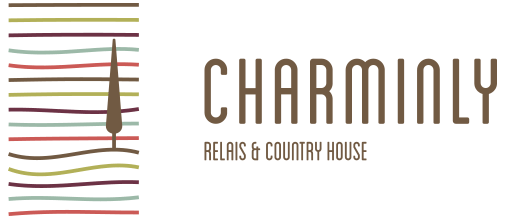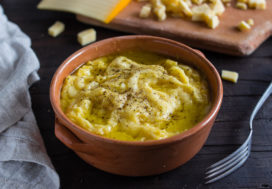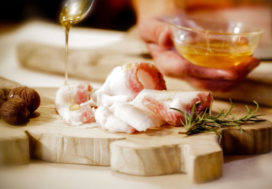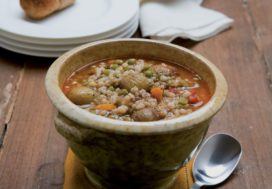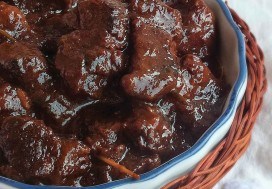Valpellinenentze Soup
When visiting the Val d’Aosta, you can taste the Valpellinentze soup. This traditional peasant dish, simple but rich in flavor, is ideal for winter. There are many variations, but the original recipe requires the use of cabbage, stale bread, beef broth and fontina, the authentic one, for a mouth-watering result.
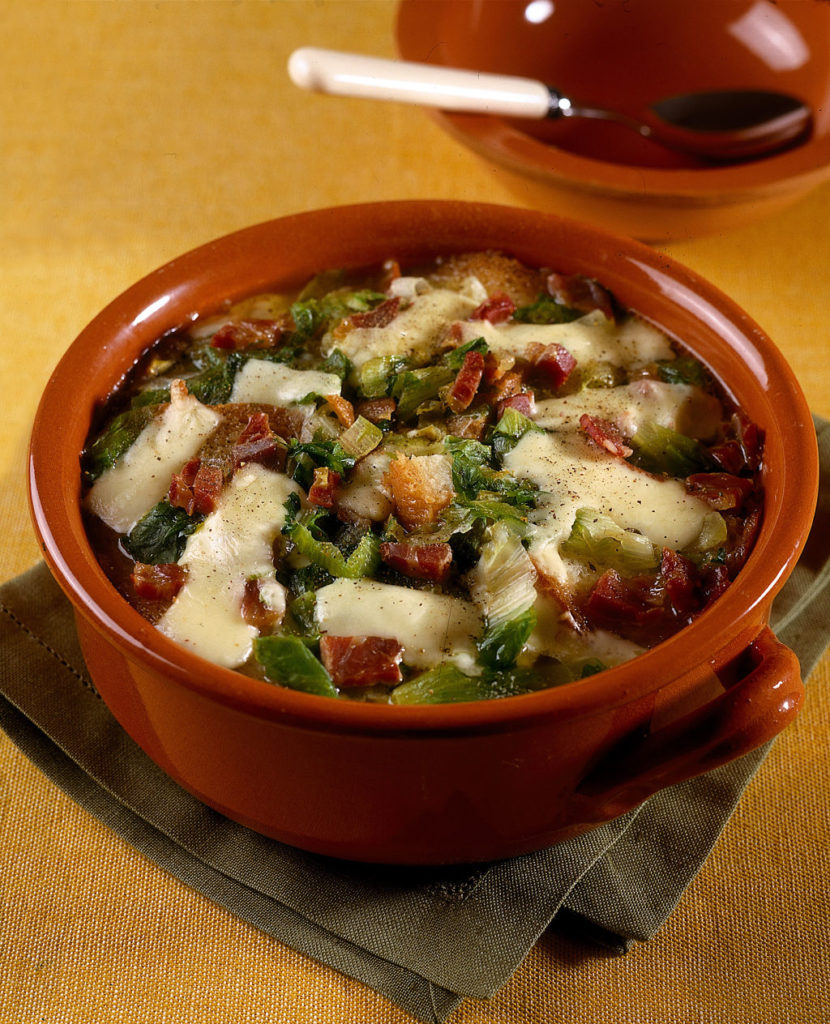
Valpellinentze soup, photo by ricette.donnamoderna
Fontina
A typical cheese from Valle d’Aosta, known all over the world, is the Fontina Dop, made with raw and whole milk. Its thin and compact rind encloses an elastic, semi-cooked and melting paste which is distinguished by its typical straw yellow colour. This energy-conscious cheese is rich in calcium, phosphorus, vitamins A and B, making it a genuine and highly digestible food. Present in all the dishes of Valle d’Aosta, from appetizers to desserts, it will charm you with its unique taste.
Carbonata with polenta
Another dish that you can not help but taste while visiting the Val d’Aosta is the carbonata with polenta. It consists of beef that is cooked for a long time in wine, with aromas and vegetables, accompanied with polenta and stewed onions. A variation is that of using dark beer instead of red wine. Since it will be served very hot, a tip is to add a little black pepper for richer taste.
Mocetta
The Val d’Aosta is also a land of incredible cold cuts such as mocetta whose term, in patois valdostano, means “piece of dried meat“. It is an ancient salami composed of meat from the leg or dried muscle from cattle but also from goat, sheep and donkey, which is flavoured with spices and herbs and left to dry. Cut into thin slices, it is usually served with fontina or parmesan or balsamic vinegar.
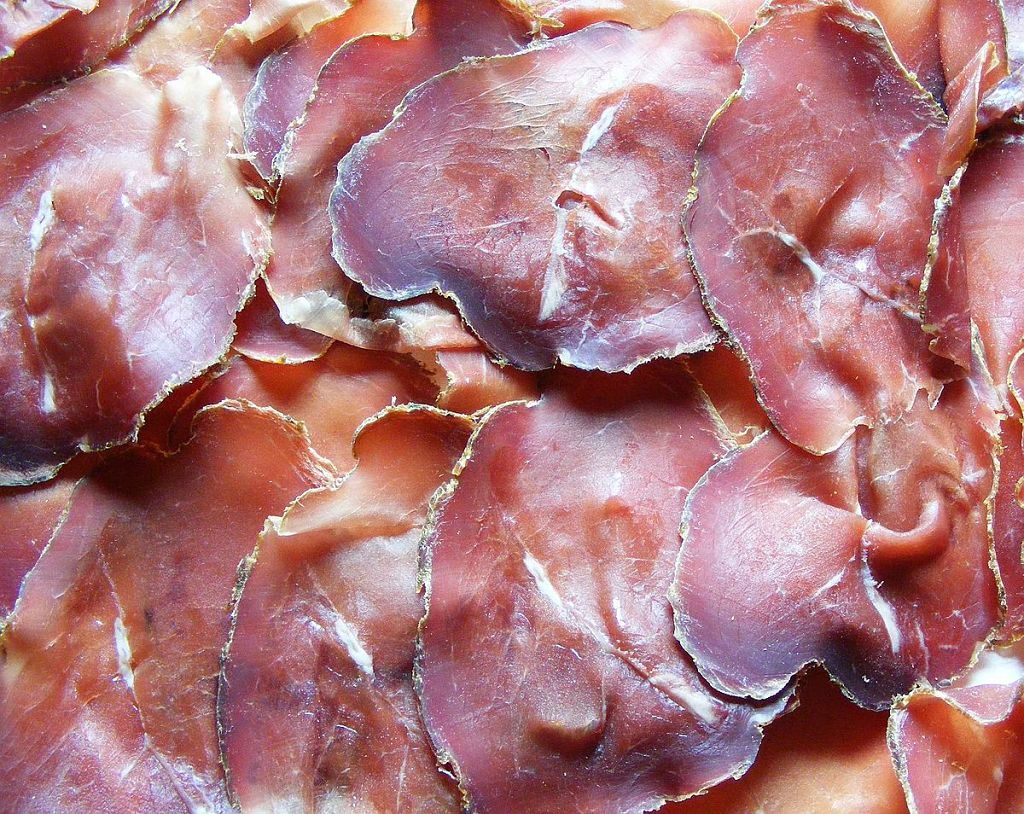
Mocetta
Cogne Cream
For lovers of desserts, however, the cream of Cogne is the dessert you have been looking for: it is a dessert served in a the glass, made of cream, milk, sugar, eggs and cocoa, which is accompanied by biscuits to use as a spoon.
Chamois Civet
This traditional delicacy from Valle D’Aosta is very rich in flavours. It requires a long preparation since the chamois must first be put to macerate three days in a mixture of wine and herbs such as bay leaf, juniper, carrot, sage and celery. After the necessary time has elapsed, the chamois is drained and dried, floured and cooked with the vegetables used for the maceration for at least 2 hours. The result is a meal to be enjoyed until the last bite.
Tegole of Valle D’Aosta
Continuing on your gastronomic tour of the Valle D’Aosta, you can not fail to enjoy the sweet tegole of Valle D’Aosta. They are sweet biscuits of round shape, very thin made with almonds and honey whose name derives from their similarity to the slate tiles that cover the roofs of the houses in Valle d’Aosta.


